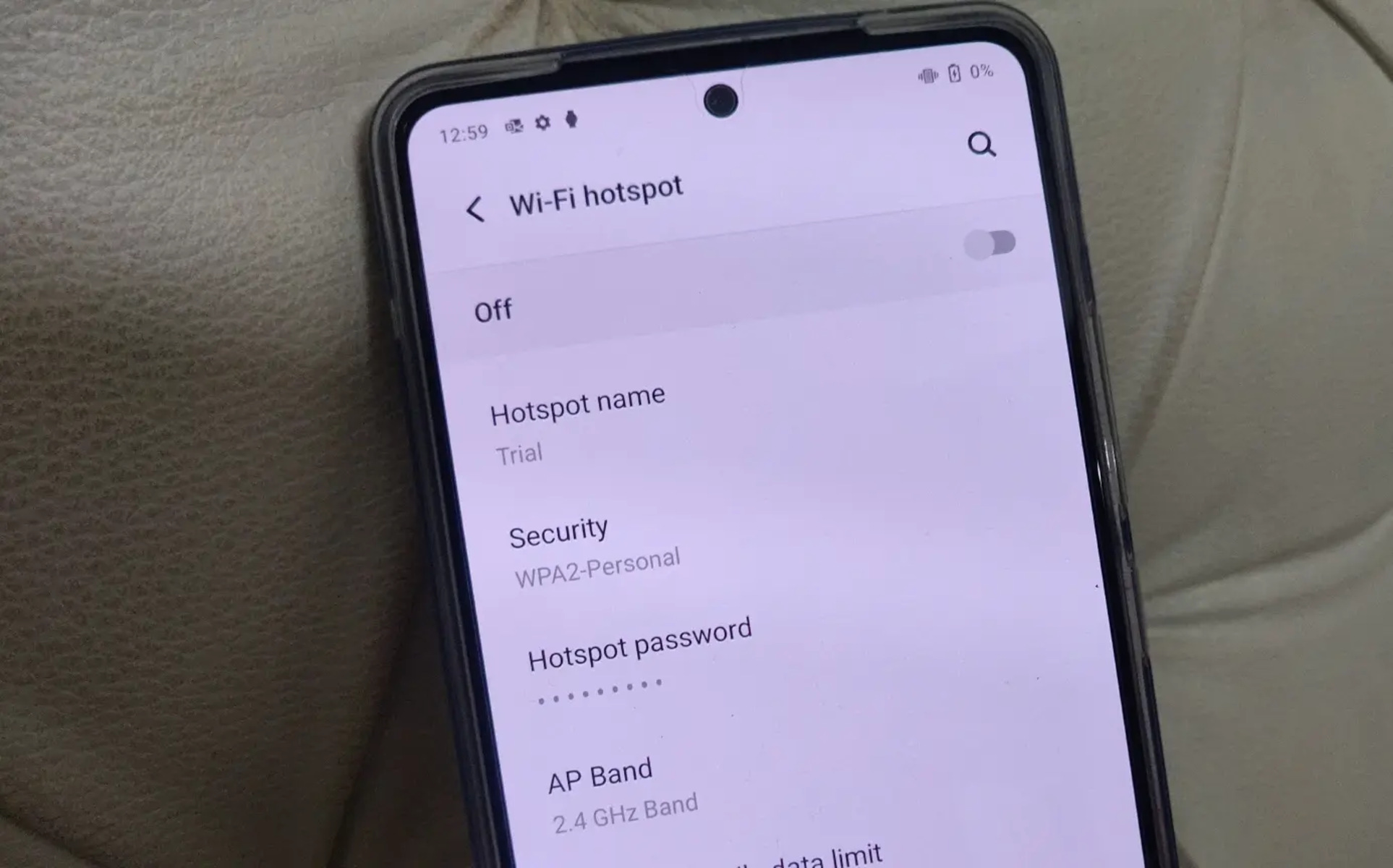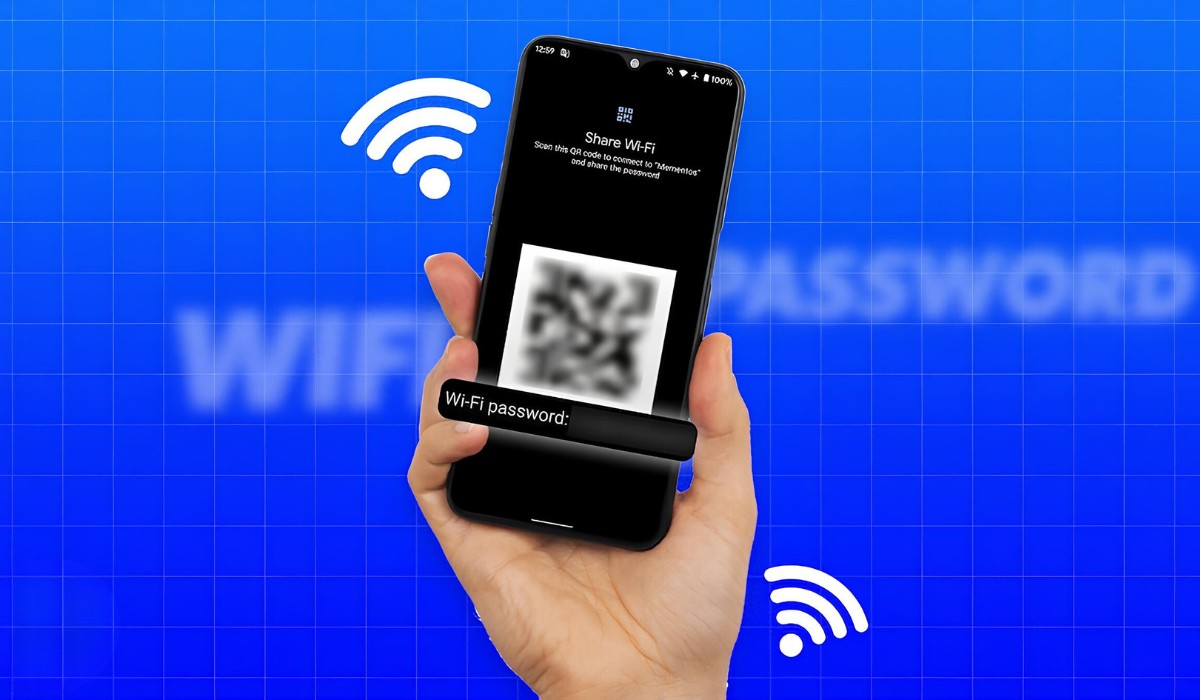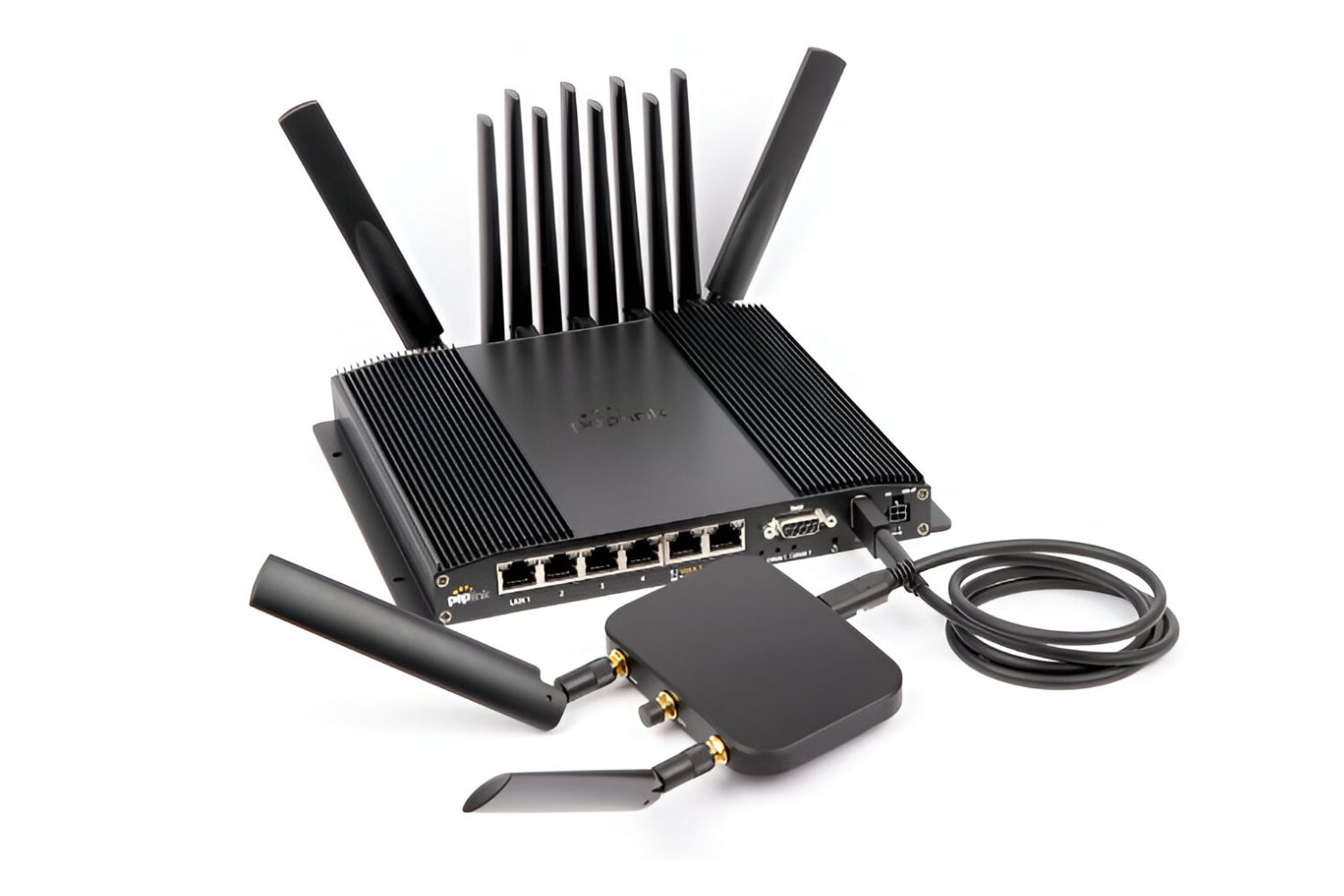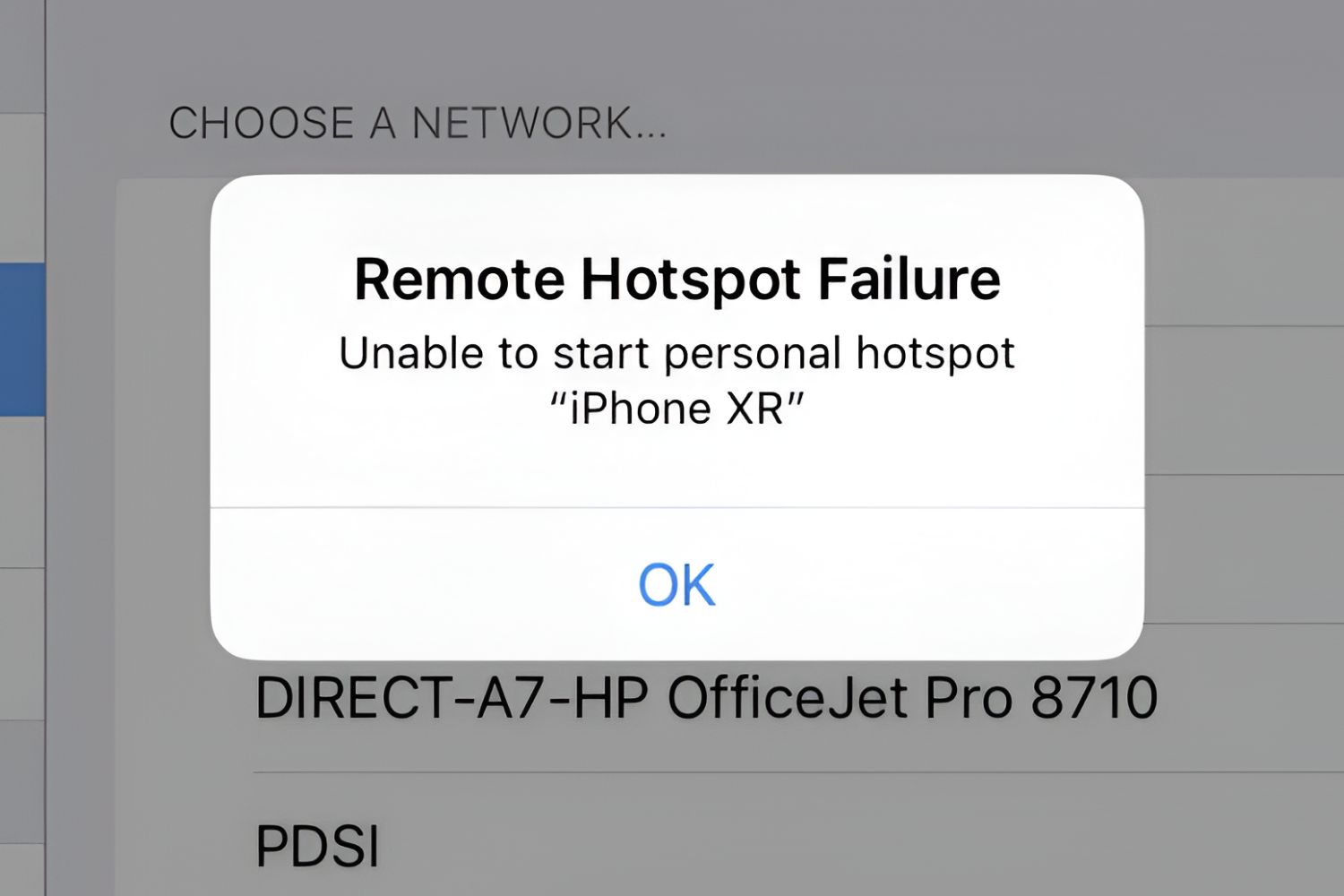Introduction
Hotspots have become an integral part of our modern digital landscape, providing convenient access to the internet in various public spaces, including cafes, airports, and libraries. Understanding the technical aspects of how hotspots function is crucial in comprehending their impact on our daily lives. This article aims to delve into the intricate workings of hotspots, shedding light on the underlying technology and security considerations.
Hotspots have revolutionized the way we connect to the internet, offering unparalleled convenience and flexibility. Whether it's sending a quick email or streaming a video, these wireless access points have empowered users to stay connected while on the go. By unraveling the technical intricacies behind hotspots, we can gain a deeper appreciation for the seamless connectivity they provide.
In the following sections, we will explore the fundamental concepts of hotspots, including their operational mechanisms and the underlying components that enable their functionality. Moreover, we will delve into the critical aspect of hotspot security, highlighting the measures implemented to safeguard users' data and privacy.
As we embark on this journey to demystify the world of hotspots, we will uncover the technology that powers these ubiquitous wireless networks. By understanding the inner workings of hotspots, readers will be equipped with valuable insights into the digital infrastructure that shapes our interconnected world.
What is a Hotspot?
A hotspot is a designated physical location that offers wireless internet access to users through Wi-Fi technology. It serves as a gateway for individuals to connect their devices, such as smartphones, laptops, and tablets, to the internet without the need for wired connections. Hotspots are commonly found in public areas, including coffee shops, airports, hotels, and shopping centers, where they enable seamless connectivity for patrons and travelers.
Essentially, a hotspot functions as a wireless access point, allowing users to access the internet within a specific range of the device. This range, often referred to as the hotspot's coverage area, can vary depending on factors such as the type of equipment used and environmental conditions. Hotspots can be set up using dedicated hardware devices or integrated into existing network infrastructure, providing flexibility in deployment and accessibility.
Moreover, hotspots can be categorized into two main types: free and commercial. Free hotspots are typically offered as a complimentary service by establishments to attract and retain customers. On the other hand, commercial hotspots are deployed by internet service providers or telecommunication companies, often requiring users to purchase access or subscribe to a service plan.
The ubiquity of hotspots has transformed the way people access the internet, offering unparalleled convenience and flexibility. Whether it's catching up on work emails during a layover or enjoying a leisurely browsing session at a local cafe, hotspots have become an integral part of our digital lifestyle.
In essence, a hotspot serves as a bridge between users and the internet, facilitating wireless connectivity in diverse settings. By understanding the fundamental concept of hotspots, individuals can harness the power of wireless technology to stay connected and productive in an increasingly interconnected world.
How Does a Hotspot Work?
At its core, a hotspot operates by enabling wireless communication between a user's device and the internet, leveraging Wi-Fi technology to establish a seamless connection. When a user enters the coverage area of a hotspot, their device detects the wireless signal emitted by the access point. This signal is transmitted via radio waves, allowing devices equipped with Wi-Fi capability to establish a connection to the hotspot.
Upon connecting to the hotspot, the user's device undergoes a process known as authentication and authorization. This involves the exchange of data between the device and the hotspot to verify the user's credentials and determine access privileges. Depending on the type of hotspot, authentication may involve entering a password, accepting terms of use, or logging in with a designated account.
Once the authentication process is successfully completed, the user's device gains access to the internet through the hotspot. Data packets are transmitted between the device and the hotspot, which in turn routes the traffic to the internet through its connection to a broader network, such as a local area network (LAN) or a wide area network (WAN). This seamless data transmission allows users to browse the web, send emails, stream media, and engage in various online activities with the convenience of wireless connectivity.
From a technical standpoint, hotspots are often integrated into existing network infrastructure, enabling them to relay data between connected devices and external networks. This involves the use of routers, switches, and other networking equipment to facilitate the seamless flow of data packets. Additionally, hotspots may be configured with specific settings and security measures to ensure the integrity and privacy of user data, mitigating potential security risks associated with wireless communication.
In essence, the operation of a hotspot revolves around the transmission of wireless signals, user authentication, data routing, and network connectivity. By understanding the underlying mechanisms that drive the functionality of hotspots, users can appreciate the technological prowess that enables ubiquitous wireless access to the internet. This insight into the inner workings of hotspots empowers individuals to make the most of these wireless gateways, fostering connectivity and productivity in an increasingly digital world.
Technical Components of a Hotspot
The technical components of a hotspot encompass a diverse array of hardware and software elements that collectively enable the seamless provision of wireless internet access. Understanding these components is essential for gaining insights into the intricate infrastructure that powers the functionality of hotspots.
1. Wireless Access Point (AP)
At the heart of every hotspot lies the wireless access point, a fundamental component responsible for emitting Wi-Fi signals and facilitating wireless connectivity. The AP serves as the central hub through which user devices establish connections and transmit data to and from the internet. It is equipped with antennas to broadcast wireless signals within a specific coverage area, allowing users to access the internet without the constraints of wired connections.
2. Router
A router plays a pivotal role in the operation of a hotspot by managing the flow of data between the connected devices and the external network. It serves as a gateway, directing data packets to their intended destinations and ensuring seamless communication between the hotspot and the broader network infrastructure. Additionally, routers enable the implementation of network address translation (NAT) and firewall functionalities to enhance security and optimize data transmission.
3. Network Switch
In a more complex hotspot setup, network switches are employed to facilitate the efficient routing of data within the local network. These switches enable the interconnection of multiple devices and access points, allowing for the seamless exchange of data packets while optimizing network performance. By leveraging network switches, hotspots can accommodate a larger number of simultaneous connections while maintaining high-speed data transfer rates.
4. Authentication Server
Authentication servers play a critical role in verifying the credentials of users seeking access to the hotspot. They handle the authentication and authorization processes, ensuring that only authorized users can connect to the hotspot and access the internet. Through robust authentication mechanisms, such as username and password validation or digital certificates, authentication servers bolster the security of the hotspot and safeguard user privacy.
5. Back-End Infrastructure
The back-end infrastructure of a hotspot encompasses the underlying servers, databases, and network resources that support its operation. This includes backend servers responsible for user management, logging, and accounting, as well as databases that store user credentials and access policies. Additionally, backend infrastructure plays a crucial role in managing the allocation of network resources and monitoring the performance of the hotspot.
By comprehensively understanding the technical components of hotspots, individuals can gain a deeper appreciation for the intricate network architecture that underpins wireless connectivity. These components work in harmony to deliver seamless internet access, empowering users to stay connected and productive in an increasingly digital world.
Hotspot Security Considerations
Ensuring robust security measures within hotspots is paramount to safeguarding user data and privacy in an era marked by increasing cyber threats. As hotspots facilitate wireless connectivity in public spaces, they are susceptible to potential security vulnerabilities that can compromise the integrity of user communications and sensitive information. Therefore, implementing comprehensive security considerations is imperative to mitigate these risks and foster a secure browsing environment for hotspot users.
Encryption Protocols
Employing robust encryption protocols, such as WPA2 (Wi-Fi Protected Access 2) or the more recent WPA3, is essential to secure the transmission of data between user devices and the hotspot. Encryption protocols serve to encode data packets, rendering them indecipherable to unauthorized entities attempting to intercept or eavesdrop on the communication. By leveraging strong encryption, hotspots can fortify the confidentiality and integrity of user data, thwarting potential security breaches.
Secure Authentication Mechanisms
Implementing secure authentication mechanisms is pivotal in controlling access to the hotspot and preventing unauthorized usage. Utilizing strong authentication methods, such as WPA2-Enterprise, which integrates with an authentication server for user verification, enhances the overall security posture of the hotspot. By requiring users to authenticate with unique credentials, such as usernames and passwords, hotspots can thwart unauthorized access attempts and bolster the protection of network resources.
Captive Portals and Terms of Use
Integrating captive portals and terms of use within the hotspot infrastructure enables establishments to communicate acceptable usage policies to users while capturing necessary user information for authentication and accountability. Captive portals serve as gateways through which users must authenticate or agree to specified terms before gaining access to the internet. This not only enhances user awareness of acceptable usage guidelines but also provides a mechanism for establishments to enforce compliance with their network policies.
Network Segmentation and Isolation
Leveraging network segmentation and isolation techniques within the hotspot environment enhances security by compartmentalizing user traffic and restricting unauthorized access to sensitive network resources. By partitioning the network into distinct segments and implementing isolation measures, hotspots can mitigate the impact of potential security breaches, limiting the lateral movement of threats within the network and safeguarding critical infrastructure from unauthorized intrusion.
Ongoing Security Monitoring and Updates
Regular security monitoring and proactive system updates are vital to maintaining the resilience of hotspot security. Establishing robust monitoring mechanisms to detect anomalous network activity and promptly applying security patches and firmware updates to networking equipment are essential practices to mitigate emerging security threats. By staying vigilant and responsive to evolving security challenges, hotspots can uphold a proactive defense posture against potential vulnerabilities.
In essence, prioritizing hotspot security considerations is pivotal in fortifying the integrity and privacy of user interactions within wireless networks. By embracing robust encryption, secure authentication, captive portals, network segmentation, and vigilant monitoring, hotspots can create a secure browsing environment, empowering users to leverage wireless connectivity with confidence and peace of mind.
Conclusion
In conclusion, hotspots serve as pivotal gateways that bridge the digital divide, offering users seamless wireless connectivity in diverse public spaces. Through the convergence of Wi-Fi technology, network infrastructure, and robust security measures, hotspots have redefined the way individuals access the internet, empowering them to stay connected and productive on the go.
The technical intricacies of hotspots, encompassing wireless access points, routers, network switches, authentication servers, and back-end infrastructure, collectively contribute to the seamless provision of wireless internet access. Understanding these components provides invaluable insights into the sophisticated network architecture that underpins the functionality of hotspots, highlighting the synergy of hardware and software elements in delivering ubiquitous connectivity.
Moreover, the emphasis on hotspot security considerations underscores the paramount importance of safeguarding user data and privacy within wireless networks. By leveraging encryption protocols, secure authentication mechanisms, captive portals, network segmentation, and ongoing security monitoring, hotspots can create a secure browsing environment, instilling confidence in users as they harness wireless connectivity for their digital endeavors.
As hotspots continue to proliferate in public spaces and commercial establishments, the need for comprehensive understanding of their technical operation and security measures becomes increasingly pertinent. By unraveling the inner workings of hotspots and embracing robust security practices, individuals and organizations can harness the full potential of wireless connectivity while mitigating potential risks associated with public Wi-Fi usage.
In essence, the pervasive presence of hotspots has transformed the digital landscape, enabling individuals to stay connected, informed, and engaged while on the move. By delving into the technical nuances and security considerations of hotspots, users can navigate the wireless realm with confidence, leveraging these ubiquitous access points to enrich their digital experiences in an interconnected world.

























